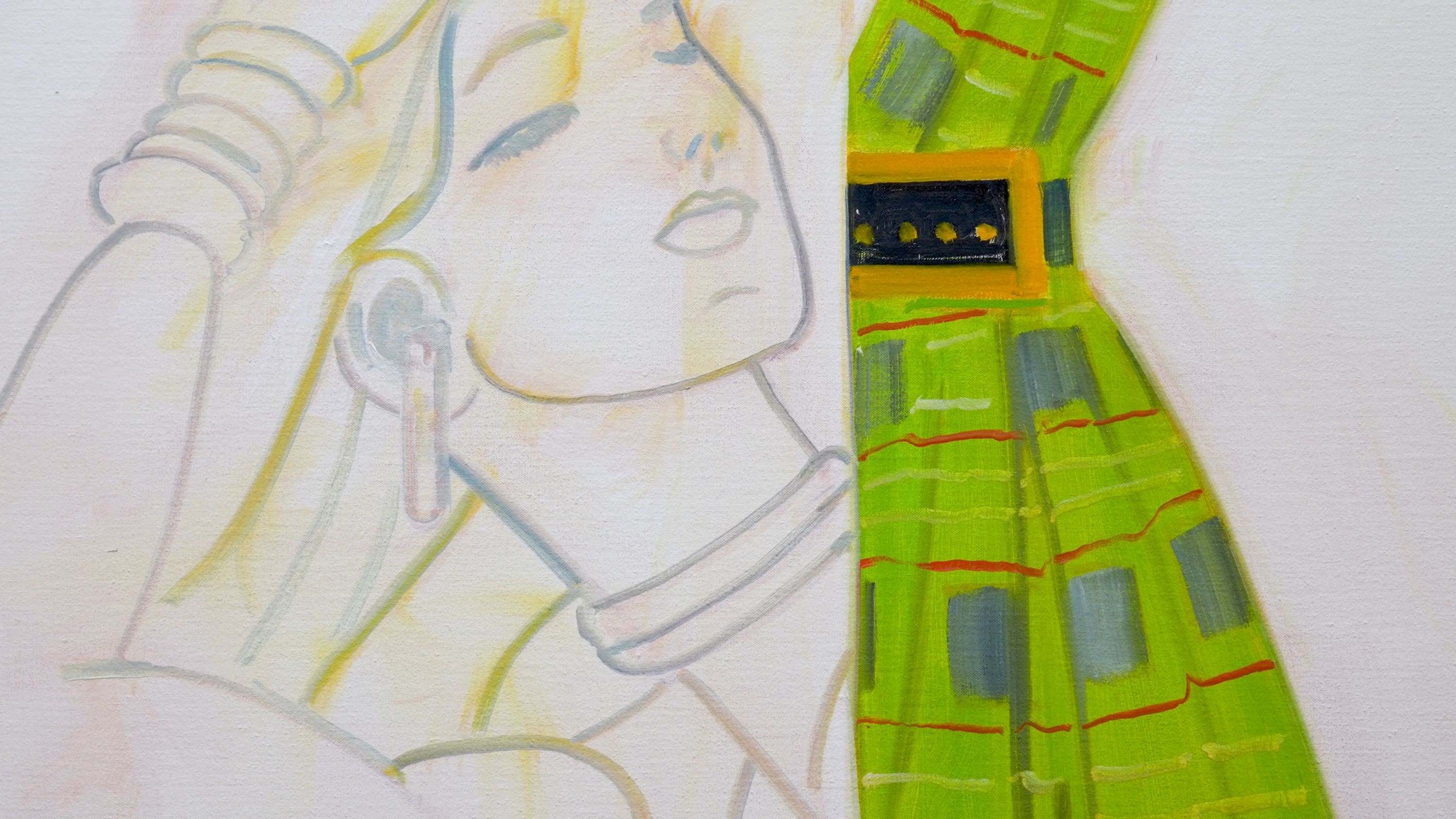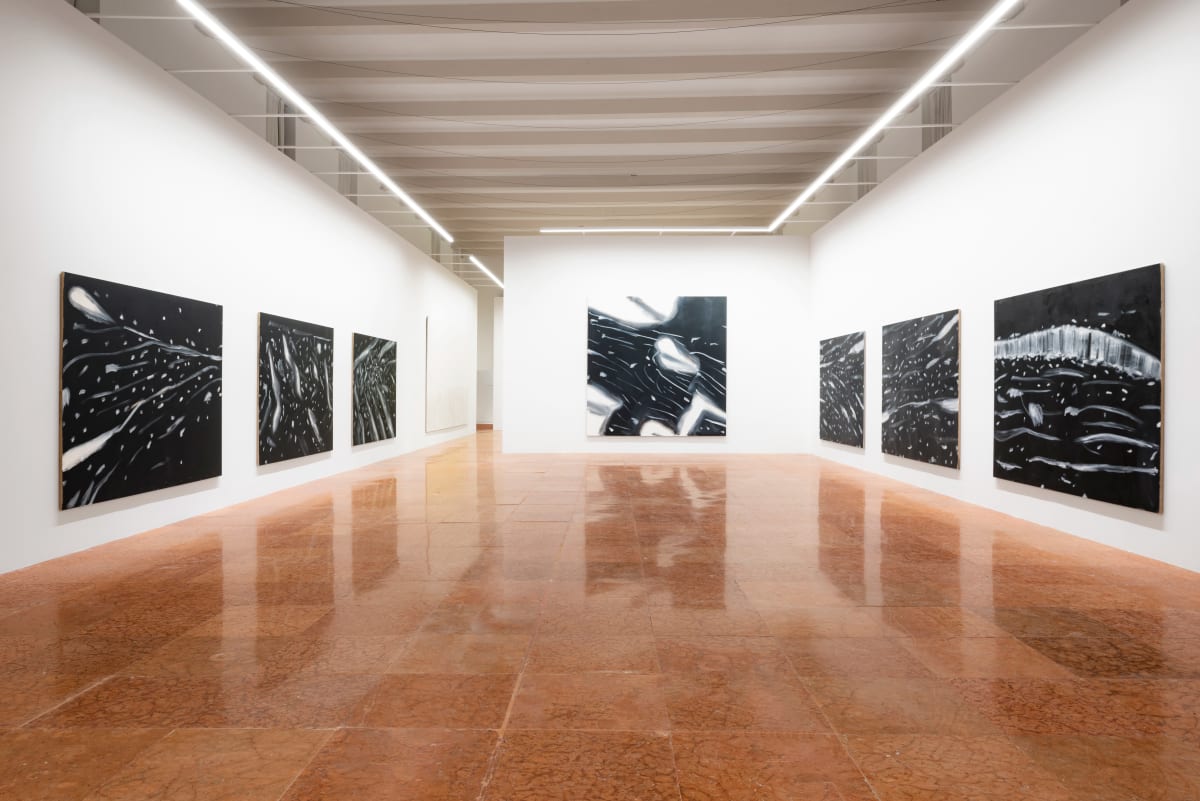Several of the works in the exhibition feature bipartite or even tripartite compositions which blend different perspectives and fragments of McCardell’s outfits into impossible and yet captivating images that recall the visual strategies of Cubism and, in particular, Picasso’s 1937 Portrait of Dora Maar which Katz wrote of his admiration for in his 2012 autobiography Invented Symbols. In one work, two models in different dresses, slightly offset, are spliced together at the centre of the canvas to form a single surprising silhouette, while in another, a female figure seems to lean out from within an outfit sliced down its middle. The crops and close-ups in these works borrow from the dynamics of cinema montage to emulate dramatic camera framings. ‘I loved movies,’ Katz wrote in his autobiography. ‘I loved the way the wide-angle screen was used, the way the rectangle was broken up.’ As a visual device, the split screen also resonates with today’s digital framework, demonstrating Katz’s continued awareness of how contemporary society looks at images. French curator Éric Troncy once wrote: ‘The temporal and stylistic permanence of Katz’s paintings confront and empathize with the fundamental and structural impermanence of fashion.’ In Katz’s words: ‘Fashion is ephemeral. Any symbol of that thing that is really new in fashion instantly becomes mortal.’
Claire McCardell 10, 2022
182.9 x 152.4 cm (72.01 x 60 in)



























































































































































































